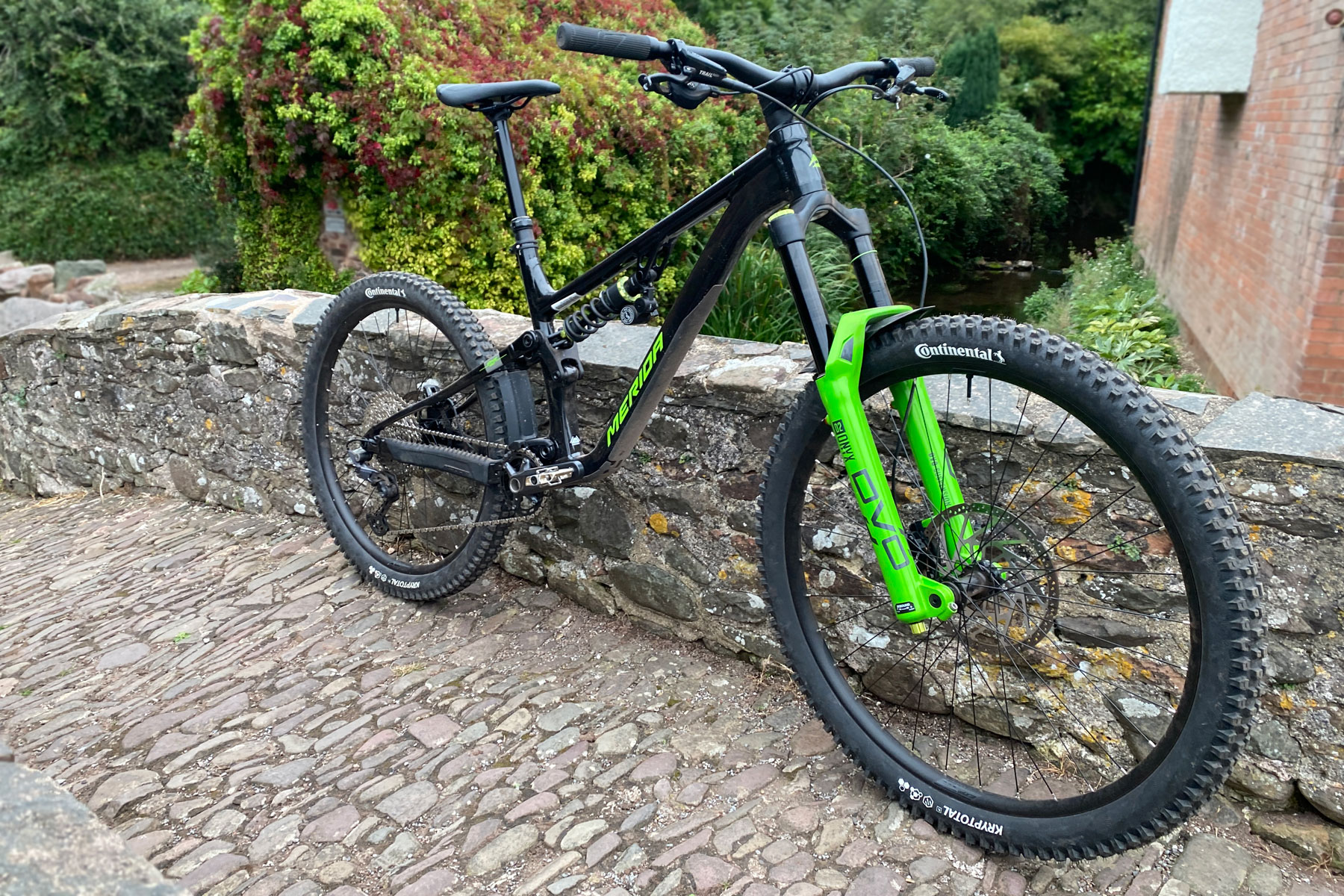Hiding in plain sight on the front of the new Merida One-Sixty FR park bike is a new 180mm 29er DVO Onyx 38 D2 fork, confirming an overall upgrade is in the works, potentially for everything from enduro to DH mountain bikes. The 36mm-based Onyx family was already deemed stiff enough for enduro & DH racing. So, DVO bumped up to bigger stanchions, bound to boost stiffness. Plus, the addition of a simpler D2-level damper for their top enduro platform (and even D3, too) start to move the high cost of entry of a DVO fork into a more palatable direction.
We already got a sneak peek at the DVO Onyx 38 family back earlier this spring. So, now it’s nice to see these forks finally make it out into the real world, and to get to try one out on the trail…
DVO Onyx 38 D2 simplified 180mm 29er enduro bike fork
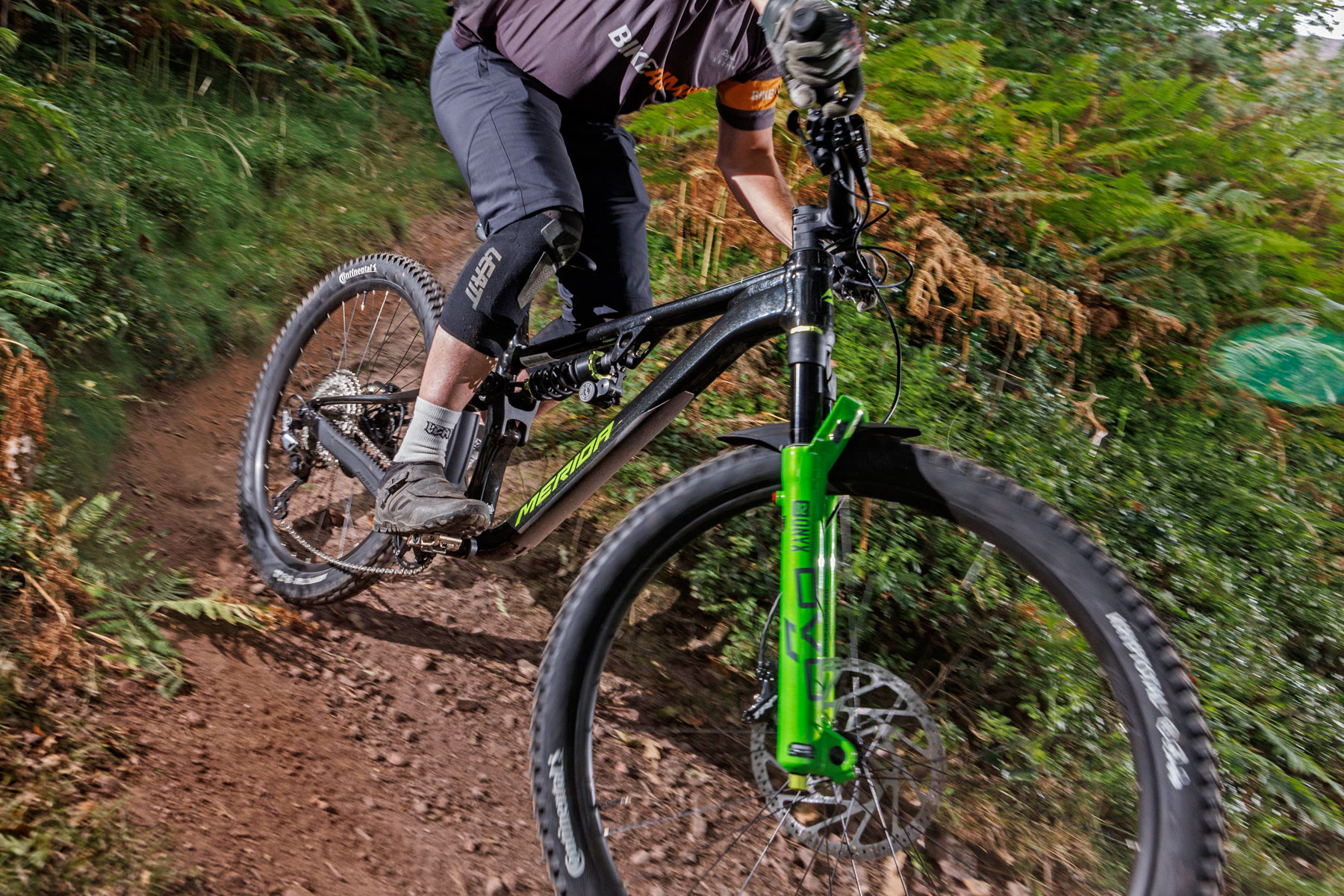
The Onyx is DVO’s go-to gravity mountain bike racing platform. Whether you go single crown for enduro or dual crown for downhill racing, both shared the 36mm platform for years. The current platform ranges from the shortest 160mm setting of the Onyx SC enduro fork up to the 203mm travel Onyx DC downhill fork.
But it’s also been pretty much a premium race-only platform. With DVO’s top D1-level damper offering tons of adjustability, but premium prices to match. Now, something simpler should offer plenty of adjustability to get you dialed. But with less faff and lower prices to boot.
What’s new?
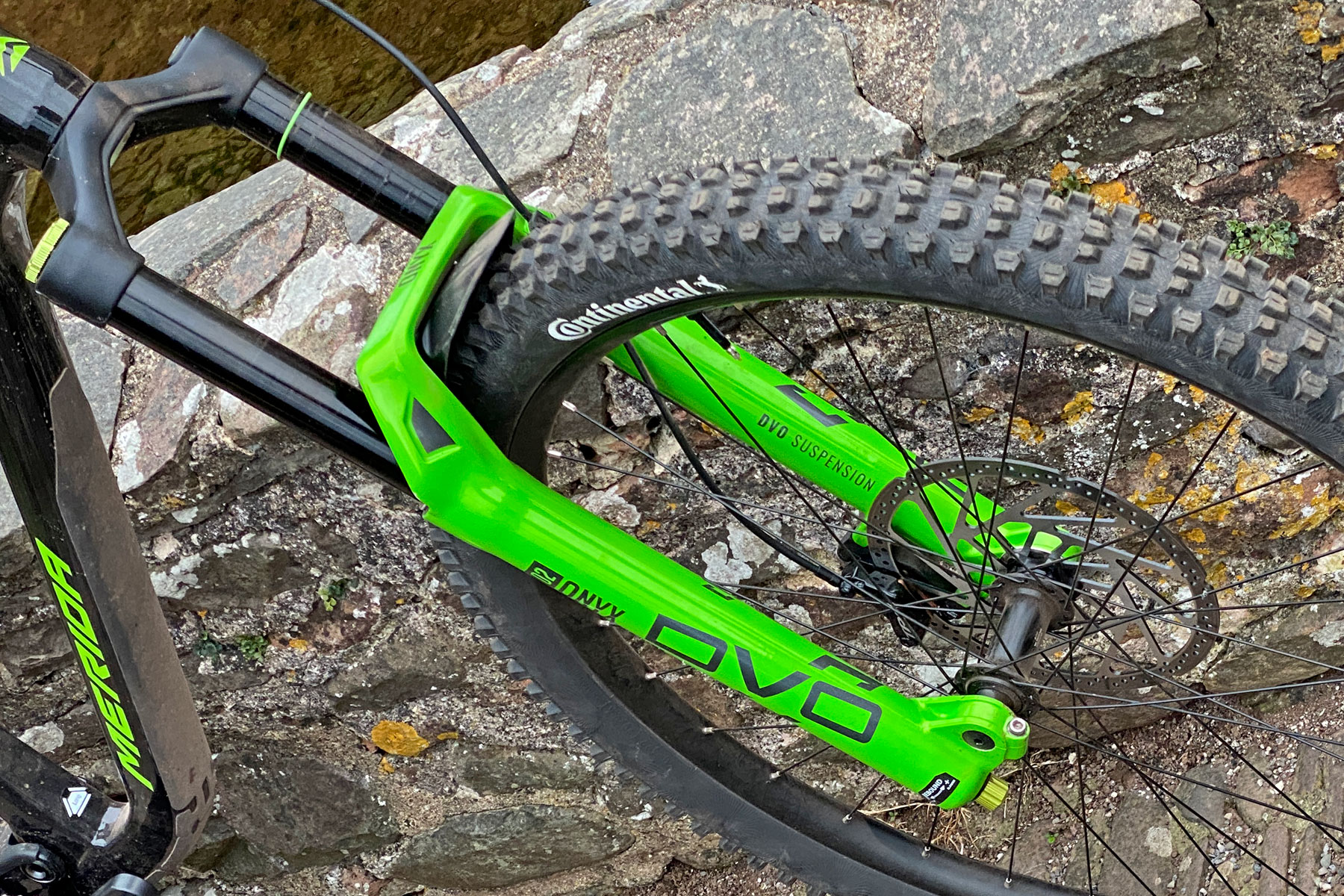
What you get now is a thoroughly modern, burly enduro to freeride fork with stiff 38mm stanchions to tackle the toughest, rowdiest terrain. And the D2 level means much of the race-level performance, but with simplified setup and lower cost.
The DVO Onyx 38 D2 gets the new self-balancing SL positive+negative air spring. It also features automatic self-bleeding valves in the lowers. That’ll keep internal pressure consistent over huge descents or drastic weather changes. Then, with those simplified D2 internals (and OEM D3, too), DVO delivers easy 3-positon external low-speed compression adjustment and full-range external low-speed rebound adjustment. Inside the D2 (and D3), you lose the OTT adjustment that tunes initial stroke with a mini coil. But you retain ramp-up & small-bump sensitivity via 0-4 air volume spacers.
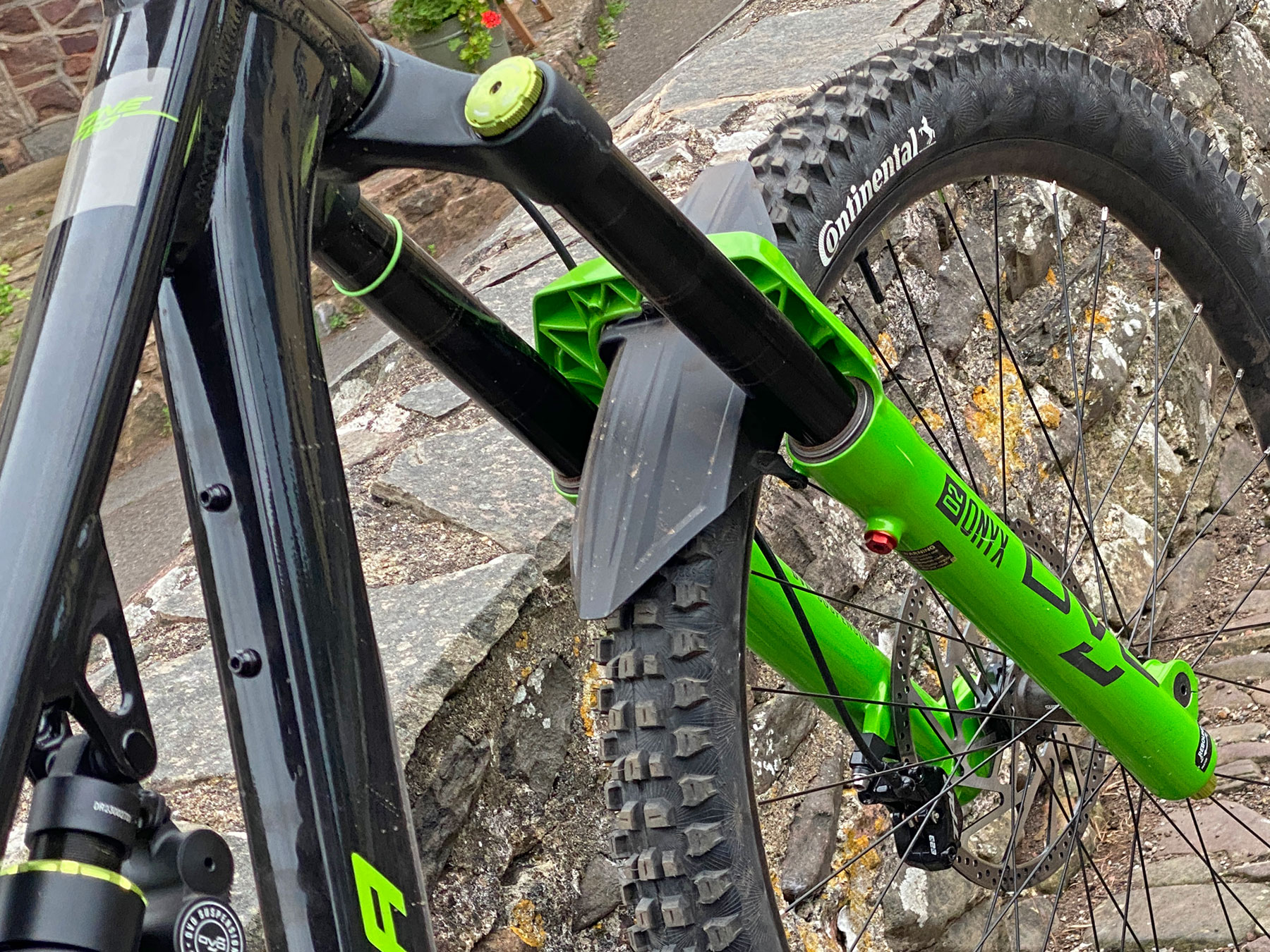
The new fork also features butted 7000-series 38mm stanchions with a newly improved “sugar-coated” treatment that reduces stiction. Bushing overlap also increases for the same goal. There will be E-series specs for eMTBs that had already increased overlap. But it’s unclear if that just becomes the new standard now.
The new Onyx 38 also features a lighter ‘dual hollow’ forged crown, and more angular cast lowers. Plus, there’s a new floating thru-axle solution with a pinch bolt on the driveside at the axle’s head. And lastly, a neater brake hose guide and new bolt-on integrated fork fender.
First Riding Impressions
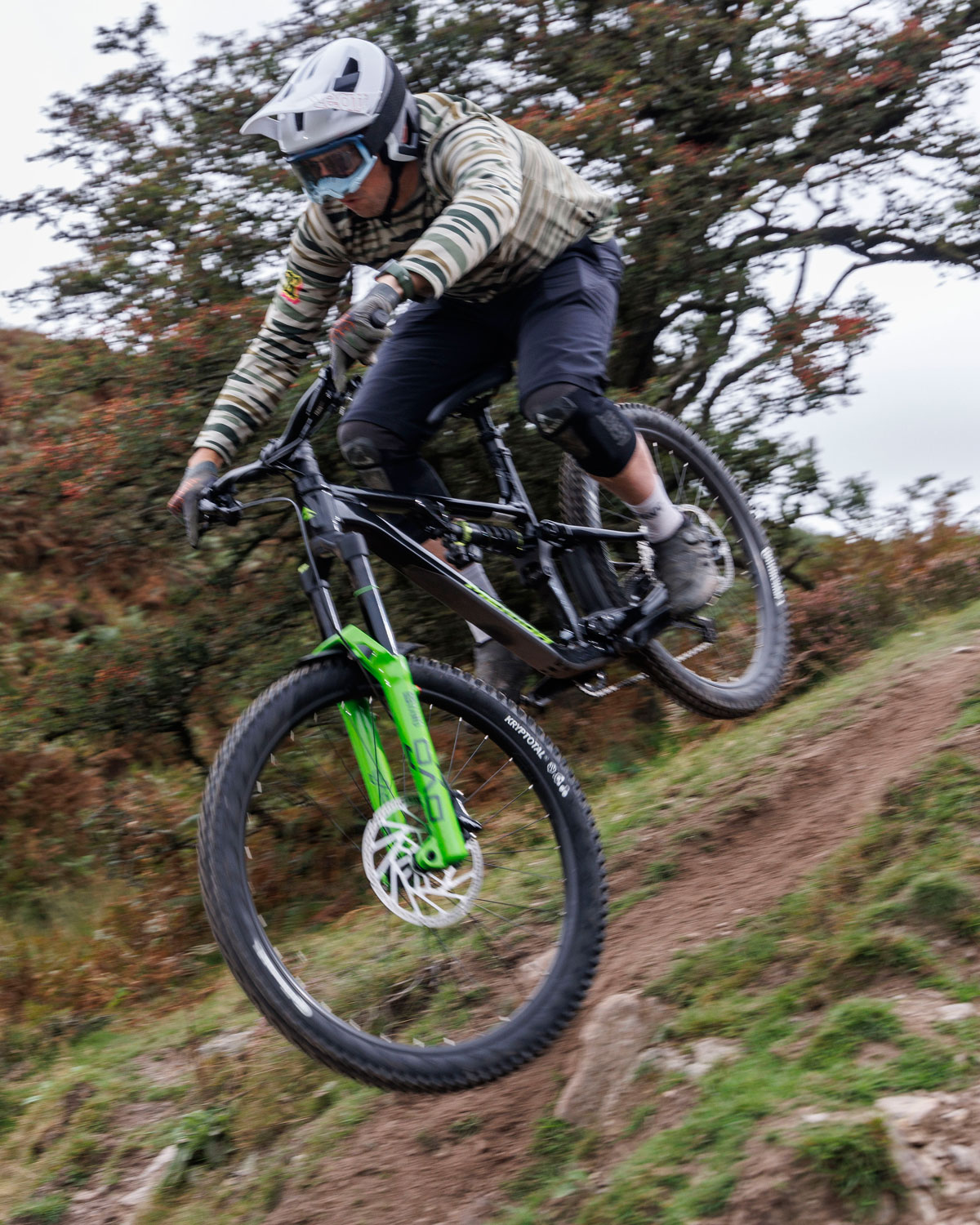
From the outside, the lowers of the new DVO Onyx 38 fork in signature green definitely look different vs. the previous generation enduro race bike fork. But if you didn’t realize the prior version used 36mm stanchions, or didn’t sit the two side-by-side, you’d be hard-pressed to realize the upgrade to 38mm stanchions. But that extra 2mm alone is likely going to be a huge stiffness boost. Now that I’ve ridden the Onyx 38 and can attest to it feeling stiff & precise. But I didn’t ride the 36mm Onyx. So I can’t really say how the old vs. new feel compares.
But notably, most other fork manufacturers would now classify 36mm stanchion forks as trail or all-mountain these days. And 38mm for proper enduro forks. Back-to-back riding a Fox 36 vs. Fox 38 at home, the difference is distinct when hitting really steep, rough trails.
Now riding a 180mm version of the new DVO Onyx 38 D2, it’s clear this is a capable hard-charging fork. My brand-new fork was set up with a couple of extra volume spacers inside to give it a more progressive feel. But I had just 20% sag for plenty of support. Right when I hit the rough trails, I realized that I could probably set it a bit softer to get a more supple feeling if I wanted. But when we got into higher speed chunky sections and really steep trails, I began to appreciate the stiffness and precision of the upgraded fork. I still was able to push the fork almost all the way through its travel. And with just a comfortable bit of reserve to correct any errors in judgment I might make down the trail when sending it a bit too hard or fast.
My Takeaways
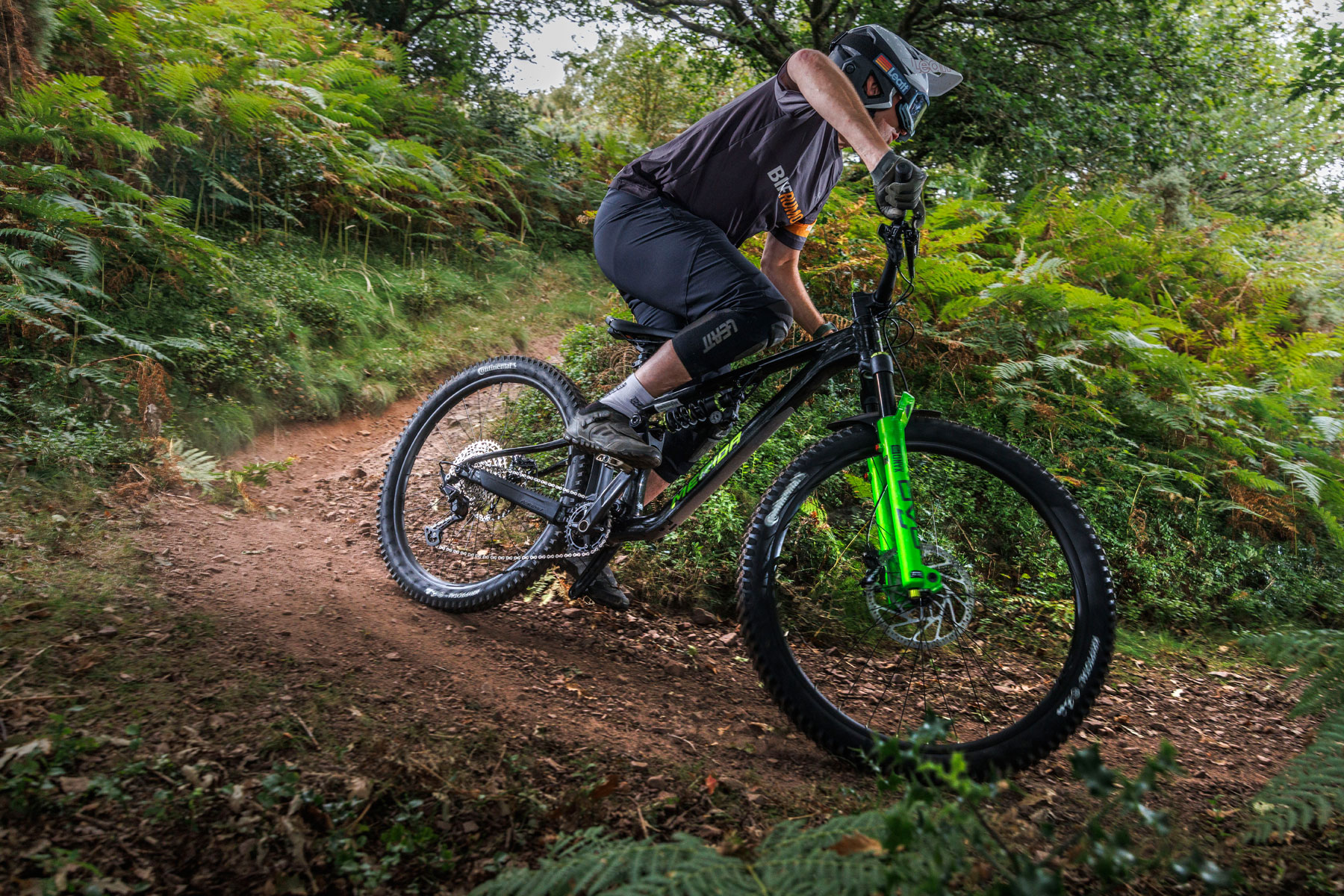
I have yet to see official pricing on the D2 spec of the Onyx fork. But it should be a bit more affordable. That said, the top Onyx 38 D1 is expected to retail for $1224. And we don’t expect the move to 29er D2 to save you more than $100 really, maybe $150 max. That means this fork is still not truly affordable, just ‘more affordable’.
Update: The D2 & D3 specs seem to have remained exclusive to OEM spec. But, DVO’s fork selection includes a new Onyx D1 38 fork with this lighter, simpler SL negative spring system, that knocks the price down to $1149, just a $75 savings.
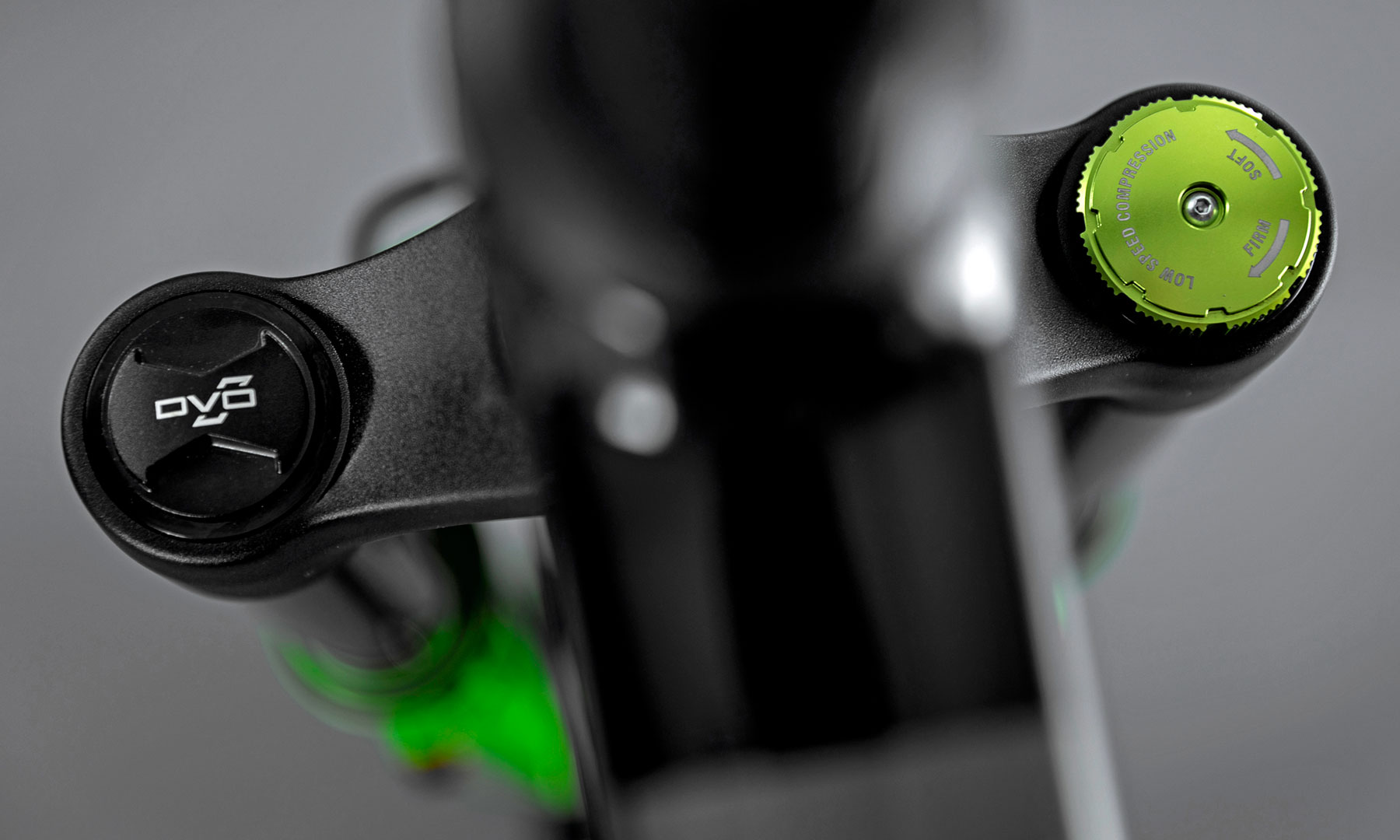
But while the Onyx 38 D2 fork drops the small bump-tunable mini coil of the original OTT system, it replaces it with simplicity. I know many riders like me will prefer the “set it and forget it” approach to suspension setup.
The self-balancing positive+negative air spring is simply much easier to get right. And you still can do easy air volume adjustment to tune progression. With a first go at it, the fork pleased me with my initial settings. And I still had plenty of adjustability to play within the rebound range on varied conditions, smaller, or bigger hits. The small 3 click range of LSC (low-speed compression) didn’t seem to have a huge effect on performance. But I personally tend to run very little compression damping in most modern fork. So, it would take me longer to see if I saw any real benefit to tweaking the LSC range vs. playing more with progression via internal volume spacers.
Final Thoughts on the DVO Onyx 38 D2
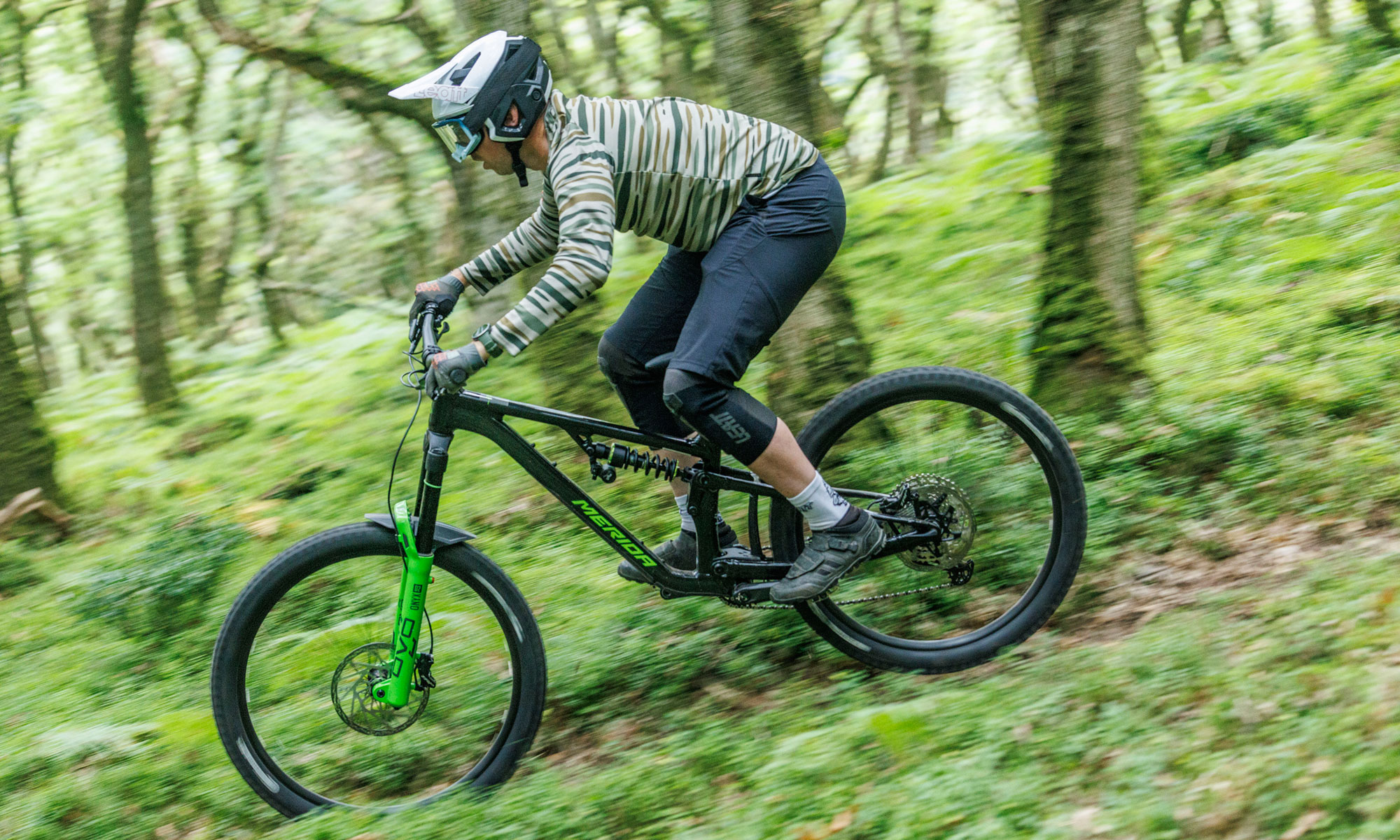
In the end, I like that Onyx 38 D2 is simple. That, while still delivering a high-performance feel I would expect from top-spec suspension. If you just want to put the right amount of air to set sag in your freeride or bikepark bike’s fork, I suspect the DVO Onyx 38 D2 will be a solid option. And like other DVO kit, it will likely stand up to hard riding. Then, still be simple to service when the time comes.
